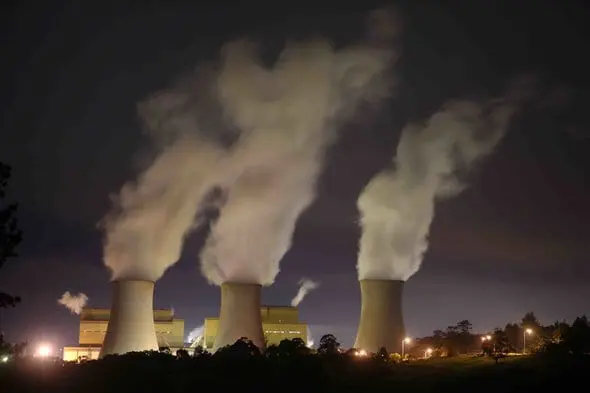Renew Economy
Victoria is getting a lot of renewables. So much so, that one gigawatt of battery storage could mean it no longer needs the 45-year-old Yallourn brown coal power station next year.- Why do coal power stations need to be closed by 2030?
- Why is Yallourn the dirtiest?
- When do you think Yallourn should close / why 2022?
- What about the jobs / workers / community?
- What about power prices? Didn’t prices go up when Hazelwood closed?
- Will there be enough electricity?
Why do coal power stations need to be closed by 2030?
In 2018, the Intergovernmental Panel on Climate Change (IPCC) warned that we have less than 11 years to prevent the worst impacts of global warming. Scientists analysed a number of pathways for limiting warming to less than 1.5 degrees. Almost every scenario requires developed countries like Australia to stop burning coal by the year 2030.
Victoria burns brown coal, which is the most polluting in the country. If we want to protect our communities and natural environment from the worst impacts of the climate crisis, we must heed this warning and phase out our three coal power stations by the year 2030, replacing them with safe, clean energy.
Why is Yallourn the dirtiest?
Yallourn is the most carbon intensive power station in Australia, with an emissions intensity of over 1.34 tCO2-e/MWh.
Click here to read more about how Yallourn damages our climate >>
Yallourn also emits very high levels of toxic pollutants like mercury. In 2017/18 it emitted 436 kilograms of mercury, the most of any coal-burning power station in Australia.
Click here to read more about how Yallourn damages health >>
When do you think Yallourn should close / why 2022?
To protect our communities and avoid the worst impacts of climate change, we need to close all of Australia’s coal-burning power stations by 2030. The dirtiest of all is Yallourn power station in Victoria, but the owner EnergyAustralia wants to keep it polluting for another 13 years to 2032. That’s much too late for our climate.
Each year, Yallourn is responsible for emitting up to 15 million tonnes of carbon dioxide pollution. This makes it responsible for 13 percent of Victoria’s emissions. It is also 46 years old, close to the end of its technical life, making it an increasingly dangerous place to work.
What about the jobs / workers / community?
Environment Victoria strongly supports the need for a just transition for the Latrobe Valley. That’s why we’ve been working in the region alongside community leaders for many years, helping to develop and campaign for new sustainable industries and initiatives and to put greater power in the hands of the community.
It’s misleading for the owners of power stations to pretend they will keep polluting until 2030 and beyond, when they know this is a disaster for our climate. Changes in government and market policy to cut pollution will also make this impossible. Communities and workers need certainty and support to move into new employment opportunities.
That’s why we’re calling for energy companies to come clean about their closure timelines and for governments to provide genuine support for the transition to other industries.
Click here to read more about a just transition in the Latrobe Valley >>
What about power prices?
When Hazelwood power station closed, the big three energy companies gamed the system and increased prices, according to experts from the Victoria Energy Policy Centre. By abusing their market power, these companies caused price spikes for consumers and raked in massive profits for themselves.
Victoria needs to close polluting coal power stations if we want to continue to have a liveable climate. By embracing alternative energy solutions, we can do this in a way that ensures all Victorians can have access to clean, affordable electricity. We advocate for solutions like the Solar Homes Program to help everyday households access solar and energy efficiency technology, the One Million Homes plan to retrofit low-income homes as well as the rights of renters to lower their bills by encouraging landlords to install solar and efficiency technology. Read more here >>
Will there be enough electricity?
We can replace the power Yallourn generates with clean energy from the sun and wind, which is then stored in new battery technology.
Victoria already has a renewable energy target to get to 40% clean energy by the year 2025. Modelling from Ernst & Young suggests this would easily cover the electricity produced by Yallourn. Since this modelling was completed, rooftop solar installation has skyrocketed following the launch of the Andrews government’s Solar Homes Program, which is further reducing strain on the grid. Preliminary analysis suggests that the biggest gains can be made in efforts to reduce energy demand and increase efficiency.
What’s more, Yallourn and Australia’s other aging coal power stations are the main causes of unreliability in the grid. During the heatwave in January 2019, one of Yallourn’s units was closed off for maintenance along with 40% of Victoria’s coal power – meaning solar was already carrying the load. As climate change gets more dramatic and we face increasingly hot summers, big coal clunkers become more of a liability. A renewable energy grid with storage capacity – like batteries – is the most sensible option.
